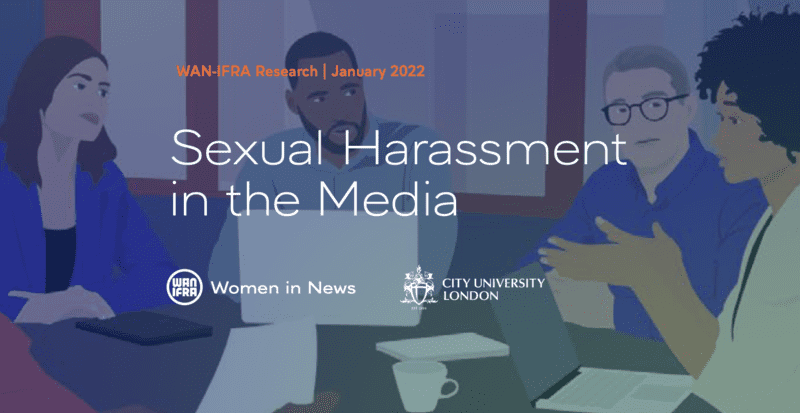New data from a global study analysing sexual harassment in 20 countries finds, on average, 40% of women media professionals have experienced sexual harassment of some kind in the workplace.
Women and gender non-conforming media professionals are almost three and a half times more likely to experience harassment than men.
The international study documenting the extent of sexual harassment in newsrooms has been released today by WAN-IFRA Women in News in partnership with City, University of London.
The study is the largest of its kind to focus on men, women and gender non-conforming media professionals in 20 countries throughout Africa, Southeast Asia, Eurasia (Russia), the Arab Region and select countries in Central America. The study, which was carried out from November 2020 to September 2021, surveyed more than 2,000 individuals and included interviews with 85 senior executives.
New data from a global study in 20 countries finds, on average, 40% of women media professionals have experienced sexual harassment of some kind in the workplace. Women and gender non-conforming media professionals are almost three and a half times more likely to experience harassment than men.

Global Results
Results show that, on average, 40% of women journalists have experienced verbal and/or physical sexual harassment in the workplace. Yet only 1 in 5 reported the incident. Though less prevalent, men have not been spared, with an average of 12% experiencing verbal and/or physical harassment. On average, 30% of all journalists surveyed experienced verbal and/or physical harassment.
“Women and gender non-conforming people are disproportionately affected by sexual harassment in the media sector. While we have known this anecdotally, the findings from this research show that sexual harassment is an endemic problem in the industry – irrespective of geography,” said Melanie Walker, executive director, Women in News at WAN-IFRA. “It is up to the industry to address this problem by being unequivocal in the stance against sexual harassment, and by having the policies and tools in place to manage incidents when they do occur in order to protect their staff, and create a safe environment for all”.
Majority go unreported
80% of sexual harassment cases are unreported. This is largely due to fear – fear of negative impact, fear of losing their job, fear of not being believed, and fear of retaliation. In addition, on average one in four respondents said they did not report their experience of harassment because their organisation lacked the mechanism to do so and/or they did not know how. Only 11% of respondents reported knowing whether their organisations even had a sexual harassment policy.
Management response is weak
Of the few cases that are reported, action is taken by the organisation in only half of the cases and is most commonly limited to warning the perpetrator (41%).
Research numbers also show that experiences of sexual harassment were overwhelmingly perpetrated by fellow employees (39%) or management (19% direct supervisor and 18.9% higher management).

Gap between perception and reality
85 executives, including 51 women, from media organisations in the five regions were interviewed as part of the qualitative research. 43.5% acknowledged that they themselves experienced sexual harassment – similar to the findings reported by women journalists. Yet only 27% of these same executives believe that it is still an issue in the industry.
“It was remarkable to notice the gap in perspective between journalists who participated in the survey and the management of media organisations. This shows that when clear and effective reporting mechanisms are not present, management are unaware of the problem of sexual harassment in their organisations,” said Lindsey Brumell, lead researcher and Senior Lecturer, City University, London.
Read the report here.
